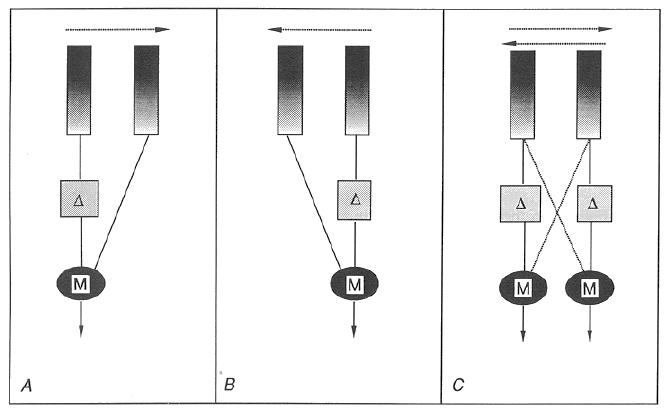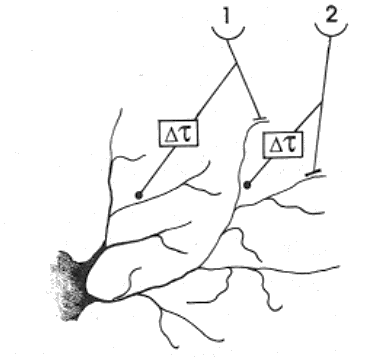This is the earliest model (Reichardt 1957) that detects both speed and direction
of visual motion.
For simplicity, let us consider the one dimensional (1D) version of this method,
as shown below. Assume the stimulus is a bright dot that moves at speed v either
from left to right or right to left. Note this dot can be simulated mathematically
by a delta function
![]() .
The responses to this stimulus of the two
photoreceptors separated by distance
.
The responses to this stimulus of the two
photoreceptors separated by distance ![]() are transmitted to an unit M where
they are assumed to be multiplied. And we further assume along some of the signal
transmission paths certain delay
are transmitted to an unit M where
they are assumed to be multiplied. And we further assume along some of the signal
transmission paths certain delay ![]() is introduced (as shown in the figure)
and the signals will arrive at M at different time instances. If it so happens that
the visual stimulus is moving at speed
is introduced (as shown in the figure)
and the signals will arrive at M at different time instances. If it so happens that
the visual stimulus is moving at speed
![]() to the right, then the
unit M in (A) will produce strong response while the unit in (B) produces none. and
the opposite will result if the stimulus is moving at the same speed but in the
opposite direction. If the motion speed of the dot is not equal to
to the right, then the
unit M in (A) will produce strong response while the unit in (B) produces none. and
the opposite will result if the stimulus is moving at the same speed but in the
opposite direction. If the motion speed of the dot is not equal to
![]() ,
none of the two units will respond.
,
none of the two units will respond.

The possible neural circuit implementing this method is shown here:
